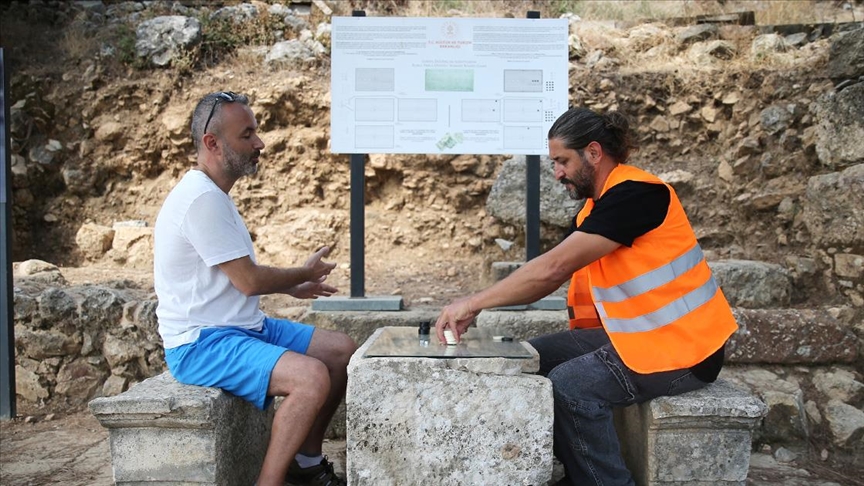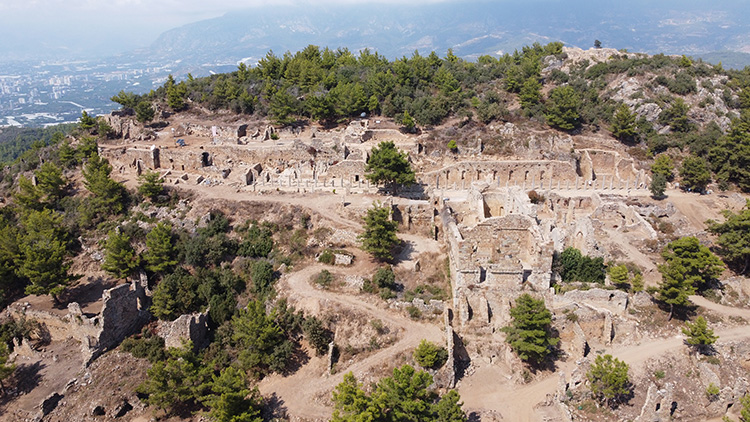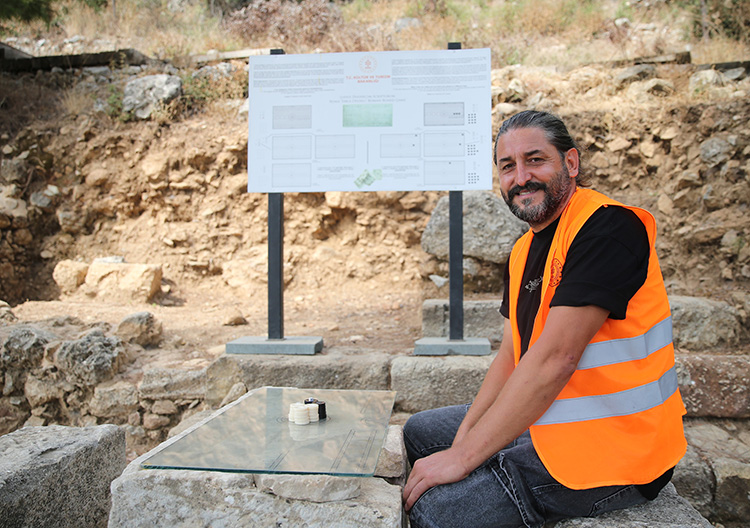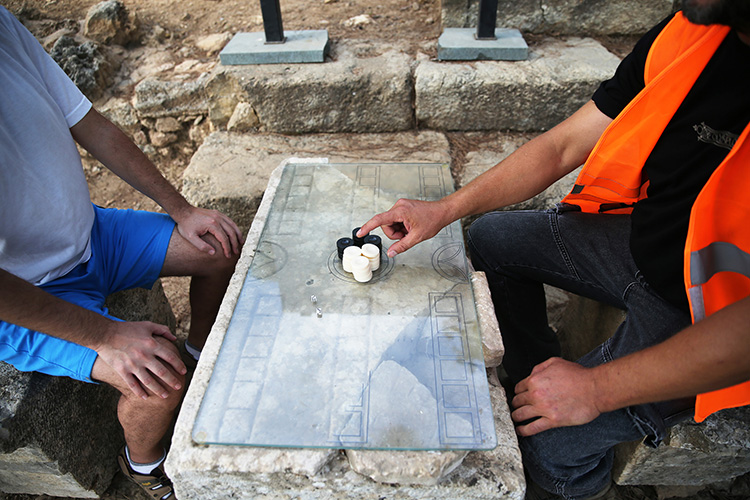
Visitors to the ancient city of Syedra are playing the popular Roman game “12 Signs”
The popular Roman game “12 Signs” (ludus duodecim scriptorum) is being introduced to visitors at the ancient city of Syedra, located in the Alanya district of Antalya.
The game “12 Signs” is also known as “Roman Backgammon.”
Pieces of the game were found during excavations on the Colonnaded Street of the 3,000-year-old ancient city. The excavation team completed the game board by drawing the missing pieces on glass.
The ancient city of Syedra is situated within the borders of Seki village in the Alanya district of Antalya. The history of the city dates back to the 7th century BC. As an important trade center in the Cilicia region, the city developed under the influence of various cultures.

The stone block of the “12 Signs” game, known as an early version of backgammon, attracts the attention of visitors to the ancient city.
Assoc. Prof Dr. Ertuğ Ergürer, a faculty member at Alaaddin Keykubat University’s Faculty of Tourism and the head of the Syedra Ancient City excavation, stated, “We can refer to the game as ‘Roman Backgammon’ or ‘table game.’ It draws attention due to its similarity to the ‘tabula’ game from the Byzantine period.”

Ergürer shared his thoughts about the game, which is believed to be played with 15 pieces and two or three dice:
“When playing this game, you can move forward by the total of the two dice you roll or by the individual numbers on the dice. Similar to modern backgammon, the ‘hitting’ method is also present in this game when you capture your opponent’s pieces. Therefore, in this game, pieces generally try to move in pairs, like 2-2. After gathering all the pieces at the end of a certain progression, the game ends.”

“We know that this game existed up to 2,100 years ago. We do not have information on how much older it might be or if it existed even earlier. We only know that it was popular during the Roman and Byzantine periods.”
Visitors to the city can see the game block on the Colonnaded Street.
Cover Photo: Mert Cantürk/AA
You may also like
- A 1700-year-old statue of Pan unearthed during the excavations at Polyeuktos in İstanbul
- The granary was found in the ancient city of Sebaste, founded by the first Roman emperor Augustus
- Donalar Kale Kapı Rock Tomb or Donalar Rock Tomb
- Theater emerges as works continue in ancient city of Perinthos
- Urartian King Argishti’s bronze shield revealed the name of an unknown country
- The religious center of Lycia, the ancient city of Letoon
- Who were the Luwians?
- A new study brings a fresh perspective on the Anatolian origin of the Indo-European languages
- Perhaps the oldest thermal treatment center in the world, which has been in continuous use for 2000 years -Basilica Therma Roman Bath or King’s Daughter-
- The largest synagogue of the ancient world, located in the ancient city of Sardis, is being restored











Leave a Reply